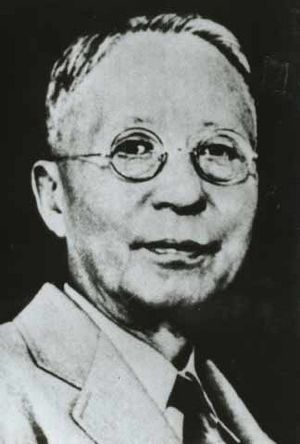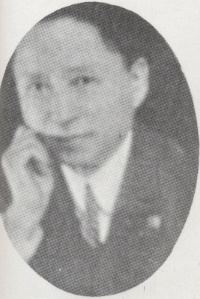Soh Jaipil facts for kids
Quick facts for kids
Philip Jaisohn
|
|
|---|---|
 |
|
| Born | January 7, 1864 Boseong County, Jeolla, Kingdom of Joseon
|
| Died | January 5, 1951 (aged 86) |
| Burial place | National Cemetery of South Korea, Seoul, South Korea |
| Nationality | |
| Spouse(s) | Muriel Armstrong |
| Children | 2 |
Soh Jaipil (born January 7, 1864 – died January 5, 1951), also known as Philip Jaisohn, was an important Korean-American leader. He was a physician and a strong supporter of the Korean independence movement. He was the first Korean to become a citizen of the United States. Philip Jaisohn also started Tongnip Sinmun, which was the first Korean newspaper written entirely in Hangul, the Korean alphabet.
Soh was involved in a failed political uprising in 1884 called the Gapsin Coup. After this, he had to leave Korea and find safety in the United States. There, he became a citizen and earned a medical degree. He returned to Korea in 1895 and became an important advisor to the Joseon government. He pushed for democracy and for Korea to be free from the influence of other countries like China. He also supported many civil rights movements.
In 1898, Soh had to return to the United States. From there, he continued to work for Korean independence. He took part in the First Korean Congress and asked the U.S. Government to support Korea's freedom, especially after the March 1st Movement. After World War II, he became a chief advisor to the United States Army Military Government in Korea. He was also chosen as a temporary representative in South Korea in the 1946 election. Philip Jaisohn died in 1951 in the United States during the Korean War. In 1994, his remains were brought back to Korea and buried in the National Cemetery in Seoul.
Contents
Early Life and Education
Seo Jae-Pil, which was Jaisohn's original name, was born as the second son of a local government official. He grew up in Seoul with one of his relatives. As a teenager, Seo Jae-Pil became interested in modern political ideas. He was influenced by a reformist leader named Kim Ok-gyun.
At just 18 years old, he passed the civil service exam, which was very rare for someone so young. He became a junior officer in 1882. The next year, he went to Japan to study. He attended the Keio Gijuku, which later became Keio University, and the Toyama Army Academy.
The Gapsin Coup and Escape
In 1884, Seo Jae-Pil joined Kim Okgyun in the Kapsin Coup. This was a bold attempt to change the old government and create more equality for everyone. He was made the Vice-Minister of Defense. However, the coup failed within three days because China sent military troops to intervene.
After the coup failed, Seo Jae-Pil was accused of treason. He lost his entire family and had to leave Korea to save his life.
Life in America
In the United States, Seo Jae-Pil attended the Harry Hillman Academy in Wilkes-Barre, Pennsylvania. He received help from John Welles Hollenback. Around this time, he started using the name "Philip Jaisohn." In 1890, he became the first Korean-American to become a citizen of the United States.
He then studied medicine at George Washington University. In 1892, he became the first Korean to earn an American medical degree. In 1894, he married Muriel Armstrong. She was related to former U.S. President James Buchanan. They later had two daughters, Stephanie and Muriel.
Promoting Independence and Democracy
In 1894, Japan defeated China in a war that took place in the Korean Peninsula. This led to many reform-minded people joining the Korean government. Because of these changes, Philip Jaisohn was pardoned for his past actions and could return to Korea in 1895.
In Korea, he worked hard to teach people about politics. Most importantly, Jaisohn started a newspaper called The Independent (독립신문). He wanted to help Korean people become well-informed citizens. For the first time, he printed his newspaper entirely in the Korean language to reach more people, including those from lower classes and women.
He promoted national independence as the main political goal. He also stressed the importance of staying neutral in diplomacy to protect Korea from countries like China, Russia, and Japan. Jaisohn also highlighted the need for public education, modern industries, and good public health. The Independent newspaper often criticized government officials' bad behavior, which caused strong reactions from conservative groups.
With the help of the Independence Club, Jaisohn organized the All People's Congress. This was an open public meeting where people could discuss political issues. Young reformers praised the Congress, and it began to set up groups across the country. In 1898, conservative groups accused Jaisohn and the Club of trying to replace the monarchy with a republic. The Korean government then asked Jaisohn to return to the U.S. After he left, the Korean government ordered the Club to close and arrested 17 leaders, including Rhee Syngman.
Working for Korea's Freedom
Back in the United States, Jaisohn did medical research at the University of Pennsylvania. He later became a successful printer and stationery seller in Philadelphia. When he heard about the March First Movement in 1919, which was a big protest against Japan's harsh rule in Korea, Jaisohn organized the First Korean Congress. This meeting was held in Philadelphia for three days.
After the Congress, Jaisohn dedicated his time and money to help Korea gain freedom. He started the League of Friends of Korea in 26 cities with the help of Rev. Floyd Tomkins. He also created the Korean Information Bureau and published a political magazine called Korea Review. His goal was to tell the American public about the situation in Korea and convince the U.S. government to support Korean freedom.
Five years later, in 1924, Jaisohn faced financial difficulties because of his political work. He had to go back to being a doctor to earn a living. At 62, he went back to school at the University of Pennsylvania to update his medical knowledge. He then published five research articles in medical journals about pathology. During World War II, he volunteered as a physical examination officer. He believed that if the U.S. won the war, Korea would gain its freedom.
Final Years in Korea
Jaisohn returned to Korea again after Japan was defeated in World War II. The U.S. Military Government, which was in charge of southern Korea, invited him to be their chief advisor. When the date for the first presidential election was set by the United Nations, 3,000 people, including a young Kim Dae Jung, asked Jaisohn to run for president. However, he decided not to.
Jaisohn felt that political unity was important for the new nation, even though he had some disagreements with the elected president, Syngman Rhee. He chose to return to the United States in 1948 and passed away in 1951 during the Korean War.
Works
- Hansu's Journey
- My Days in Korea and other Essays
- My compatriots in the homeland (고국에 계신 동포에게)
Related pages
Images for kids
See also
 In Spanish: Seo Jae-pil para niños
In Spanish: Seo Jae-pil para niños






